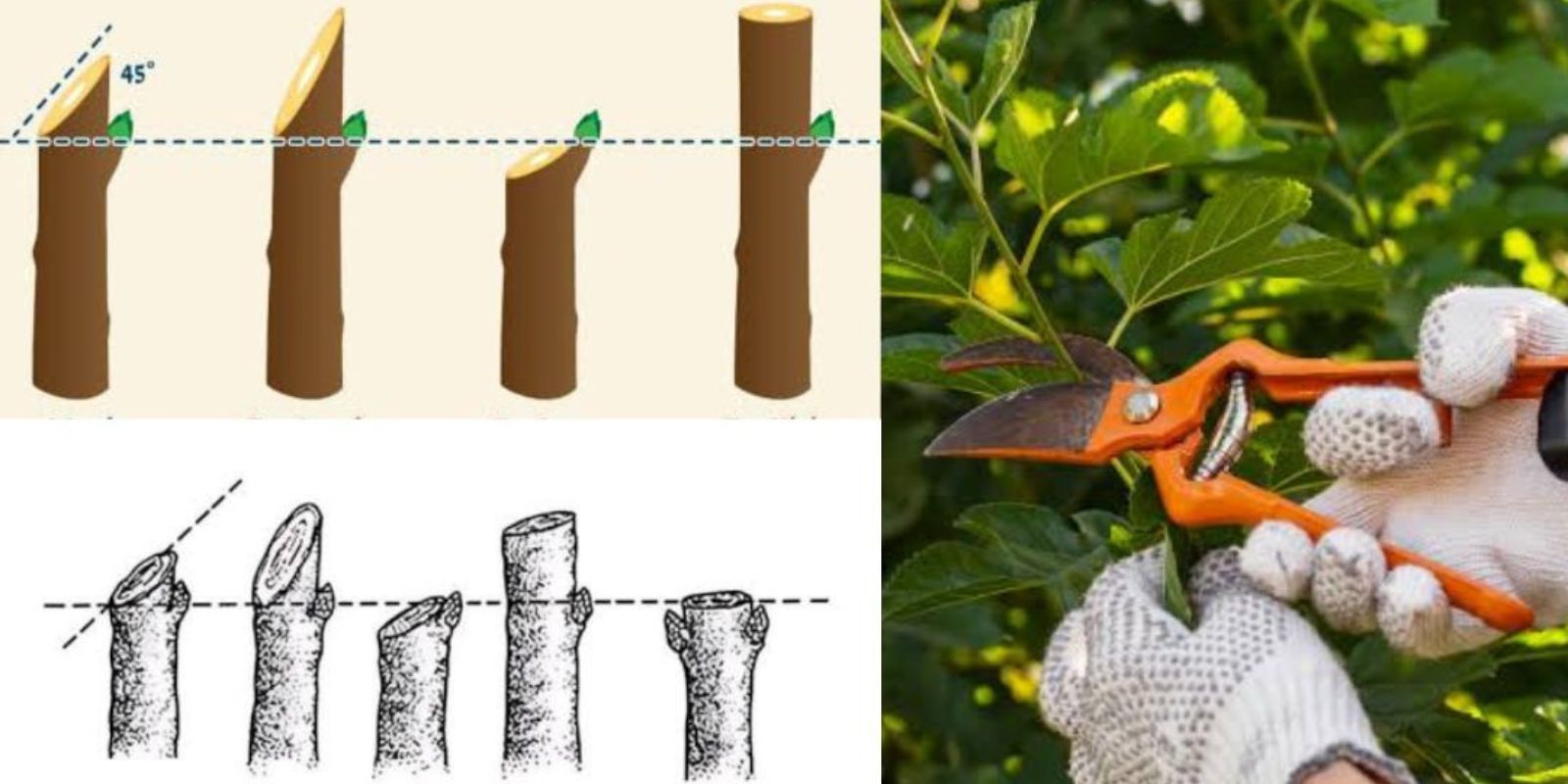Pruning is one of the most essential gardening tasks, yet it is often misunderstood or overlooked. When done correctly, pruning can improve the health, structure, and appearance of trees and shrubs while also encouraging more vigorous growth and flowering. Whether you’re maintaining fruit trees, shaping ornamental shrubs, or simply ensuring your plants thrive, mastering the art of pruning is crucial.
This guide will walk you through everything you need to know about pruning, from understanding why it’s important to learning the best techniques and timing for different types of plants.
Why Pruning Matters
Pruning is more than just cutting off branches—it’s a strategic process that helps plants in multiple ways:
1. Encourages Healthy Growth
Removing dead, damaged, or diseased branches prevents infections from spreading and allows the plant to direct its energy toward producing strong, healthy growth.
2. Improves Air Circulation and Sunlight Exposure
Thinning out dense branches helps improve airflow, reducing the risk of fungal diseases. It also ensures that sunlight reaches more parts of the plant, which is particularly important for fruit-bearing trees.
3. Shapes the Plant and Enhances Aesthetic Appeal
Pruning helps trees and shrubs maintain a balanced shape, preventing overgrowth that can lead to weak or leggy plants. For decorative plants, proper pruning enhances their natural beauty and symmetry.
4. Boosts Flower and Fruit Production
Many flowering shrubs and fruit trees require annual pruning to encourage more blooms and higher fruit yields. Removing old growth stimulates new buds and ensures better harvests.
5. Prevents Structural Issues and Hazards
Overgrown branches can become weak and prone to breaking, posing a hazard to property and people. Proper pruning ensures that trees and shrubs develop strong, stable structures.
When to Prune: Understanding the Best Timing
The best time to prune depends on the type of plant and the desired outcome. Here’s a general guide:
1. Late Winter to Early Spring (Before New Growth Begins)
- Ideal for most deciduous trees and shrubs
- Promotes vigorous spring growth
- Best for structural pruning
Examples: Apple trees, pear trees, roses, maples, and oaks
2. After Flowering (For Spring-Blooming Shrubs)
- Prune immediately after flowers fade to avoid cutting off next season’s buds
- Helps maintain shape and encourage more blooms next year
Examples: Lilacs, azaleas, forsythia, and rhododendrons
3. Summer Pruning (After Growth Has Slowed)
- Controls overgrown plants and encourages branching
- Ideal for shaping hedges and shrubs
Examples: Boxwood, privet, wisteria, and hydrangeas
4. Fall Pruning (Only for Certain Plants)
- Best for removing dead or diseased wood before winter
- Avoid heavy pruning, as cuts may not heal before frost
Examples: Some evergreen shrubs and deadwood on trees
How to Prune Correctly: Techniques for Success
Using the right pruning techniques ensures that your plants remain healthy and recover quickly. Follow these best practices:
1. Use Sharp, Clean Tools
- Always use sterilized pruning shears, loppers, or saws to prevent the spread of disease.
- Make clean cuts to avoid damaging the plant.
2. Identify What to Remove
- Dead or Diseased Branches: Cut back to healthy wood.
- Crossing Branches: Remove one to prevent rubbing and wounds.
- Weak or Leggy Growth: Trim to encourage bushier growth.
3. Make Proper Cuts
- Cut at a 45-degree angle above a healthy bud or branch junction.
- Avoid cutting too close to the trunk—leave the branch collar intact to promote healing.
4. Follow the One-Third Rule
- Never remove more than one-third of a plant’s growth at a time. Over-pruning can stress the plant and reduce its ability to recover.
5. Consider the Plant’s Natural Shape
- Avoid excessive shaping unless necessary. Let the plant grow in its natural form while keeping it healthy and manageable.
Pruning Tips for Specific Plants
1. Fruit Trees (Apple, Pear, Cherry, Peach)
- Prune in late winter before buds break.
- Remove weak branches and thin the canopy to allow sunlight to reach fruiting wood.
2. Roses
- Prune in early spring when new growth appears.
- Cut back dead or weak stems and shape for better airflow.
3. Hydrangeas
- Some varieties bloom on old wood (prune after flowering), while others bloom on new wood (prune in late winter).
4. Evergreen Shrubs (Boxwood, Yew, Holly)
- Prune in early summer to shape, but avoid heavy cutting in late fall.
5. Flowering Shrubs (Lilac, Forsythia, Azalea)
- Prune immediately after flowering to avoid removing next year’s blooms.
Common Pruning Mistakes to Avoid
Even experienced gardeners can make mistakes when pruning. Here’s what to watch out for:
🚫 Topping Trees: Cutting off the top of a tree weakens its structure and leads to weak, fast-growing shoots.
🚫 Over-Pruning: Removing too much at once can stress the plant and reduce its ability to photosynthesize.
🚫 Ignoring Disease Prevention: Always clean pruning tools between cuts, especially when dealing with diseased plants.
🚫 Wrong Timing: Cutting at the wrong time of year can reduce flowering or cause stress to the plant.
After-Pruning Care: Helping Plants Recover
After pruning, plants need time to heal. Here’s how to support their recovery:
💧 Watering: Provide sufficient moisture, especially during dry periods.
🌱 Mulching: Apply a layer of mulch around the base to retain moisture and protect roots.
🌿 Fertilizing: Avoid heavy fertilization immediately after pruning—wait until the plant begins new growth.
Final Thoughts
Pruning is a vital skill for any gardener, and mastering it can lead to healthier, more productive plants. Whether you’re shaping ornamental shrubs, maintaining fruit trees, or keeping your garden neat, understanding when and how to prune makes all the difference.
Now it’s your turn! Do you have a favorite pruning trick or a plant that responds well to your care? Drop a comment below! 👇✨

